When it comes to row covers for your garden, should you go with fabric or plastic? That’s one of the most common questions I get about growing in winter. Which is better?
In my experience (gardening in a zone 5 microclimate in Central Oregon), there’s no single best row cover if you’re using a low tunnel. It depends on what is being grown and how active you want to be in managing your garden. I’ve experimented with various combinations of row covers over the years—fabric only, plastic only, plastic over fabric—and I’ve found that you can have a productive winter vegetable garden with either setup.
But, certain situations may call for one or the other, as an improperly-selected row cover can doom your garden to failure. How can you decide what to go with? Here are seven questions to ask yourself this season.
Disclosure: If you shop from my article or make a purchase through one of my links, I may receive commissions on some of the products I recommend.
1. Can you get in the garden every day?
This might be the most important thing to consider when choosing the right row cover: how hands-off you want to be. Fabric row covers are permeable to air and thus self-venting. They can stay in place from late fall to early spring as long as you don’t get a freak heat spell.
On the other hand, low tunnels covered with clear plastic sheeting have to be continuously monitored and vented on sunny days. The interior temperatures can easily reach 80°F or more in winter if the daytime high outside creeps up to 40°F.
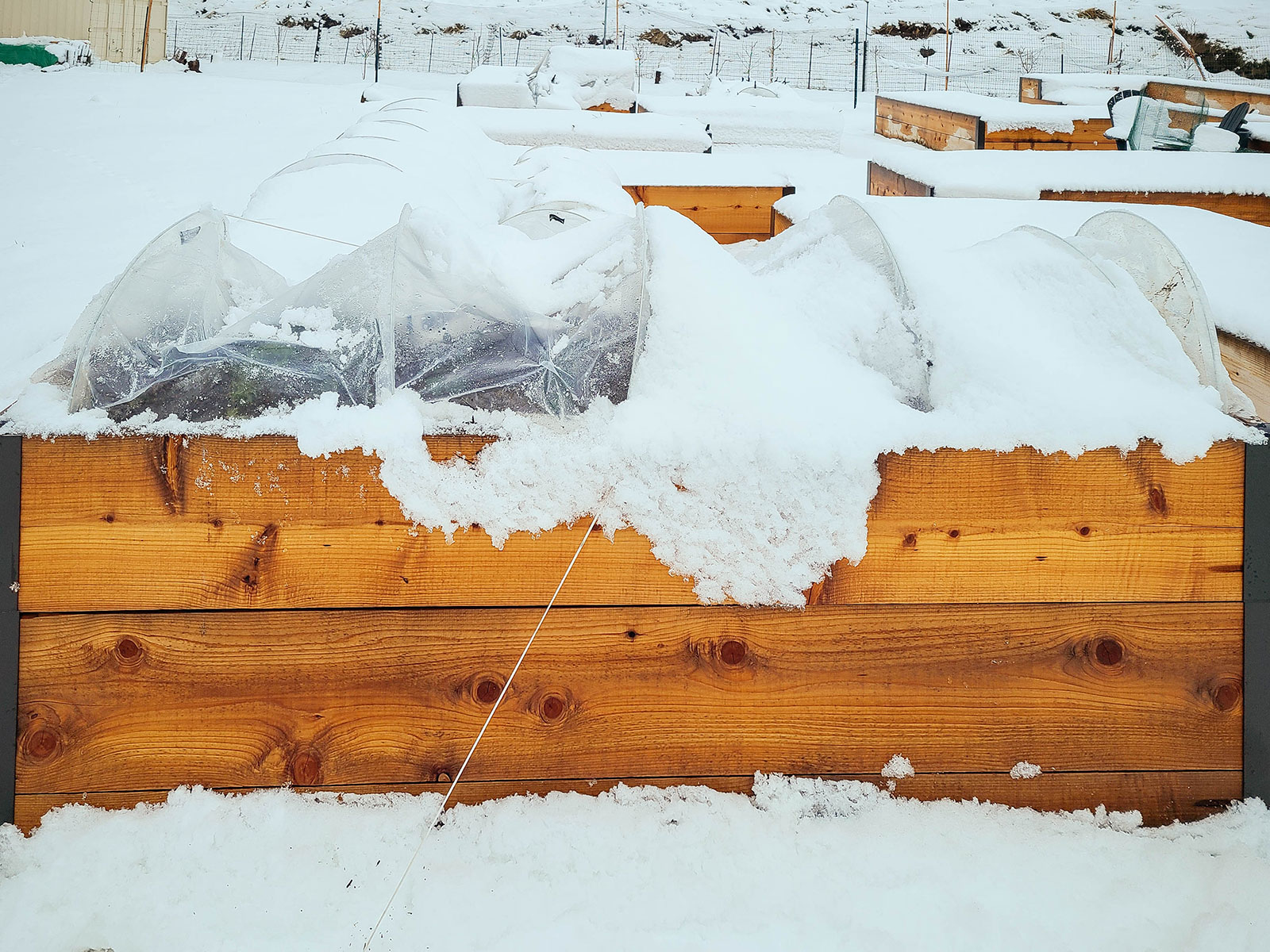
And warmer doesn’t necessarily mean better conditions for your cool-season crops. Warmer temperatures trigger plants to lose the cellular adaptations and sugars they’ve produced to withstand freezing conditions. (Remember that low tunnels don’t prevent freezes—they just help plants survive winter.)
So how warm is too warm? Generally, if using plastic, you should vent your tunnel if the temperature inside the tunnel starts approaching 60°F. I recommend buying an inexpensive remote temperature sensor (no Internet connection needed) to monitor temps and humidity in winter. This is the one I use in several of my low tunnels.
2. What is your hardiness zone?
Many people assume that clear plastic or glass are the only options for winter gardening, but fabric row covers can work just as well in most of the United States. If your winter lows rarely dip below 0°F, then fabric is a great choice if you can’t or don’t want to use clear plastic.
I use medium-weight frost cloth on most of my raised beds and can grow a variety of cold-hardy crops all winter long, including kale, collards, cabbage, mache, miner’s lettuce, sorrel, spinach, baby Asian greens, baby fava beans, winter peas, chard, and beet greens. I’ve even grown lettuce in the depth of winter by doubling up on the fabric if the forecast calls for exceptionally frigid weather. Most of my cold-hardy culinary herbs also live under fabric covers in winter
3. What are you hoping to grow?
I reserve my plastic-covered low tunnel for vegetables that are less tolerant of hard freezes. For example, baby Asian greens (like tatsoi and komatsuna) can easily survive freezes under fabric row cover, but their mature versions tend to turn limp and mushy. The same is true of other mature vegetables like lettuce, chard, and fava beans.
So if you want to have salads all winter long but cannot use plastic, try to time your sowings so that your plants are in the baby leaf stage by the first frost and can survive under fabric the rest of the season. (Baby Asian greens are very mild and tender, making them the perfect winter salad green.)
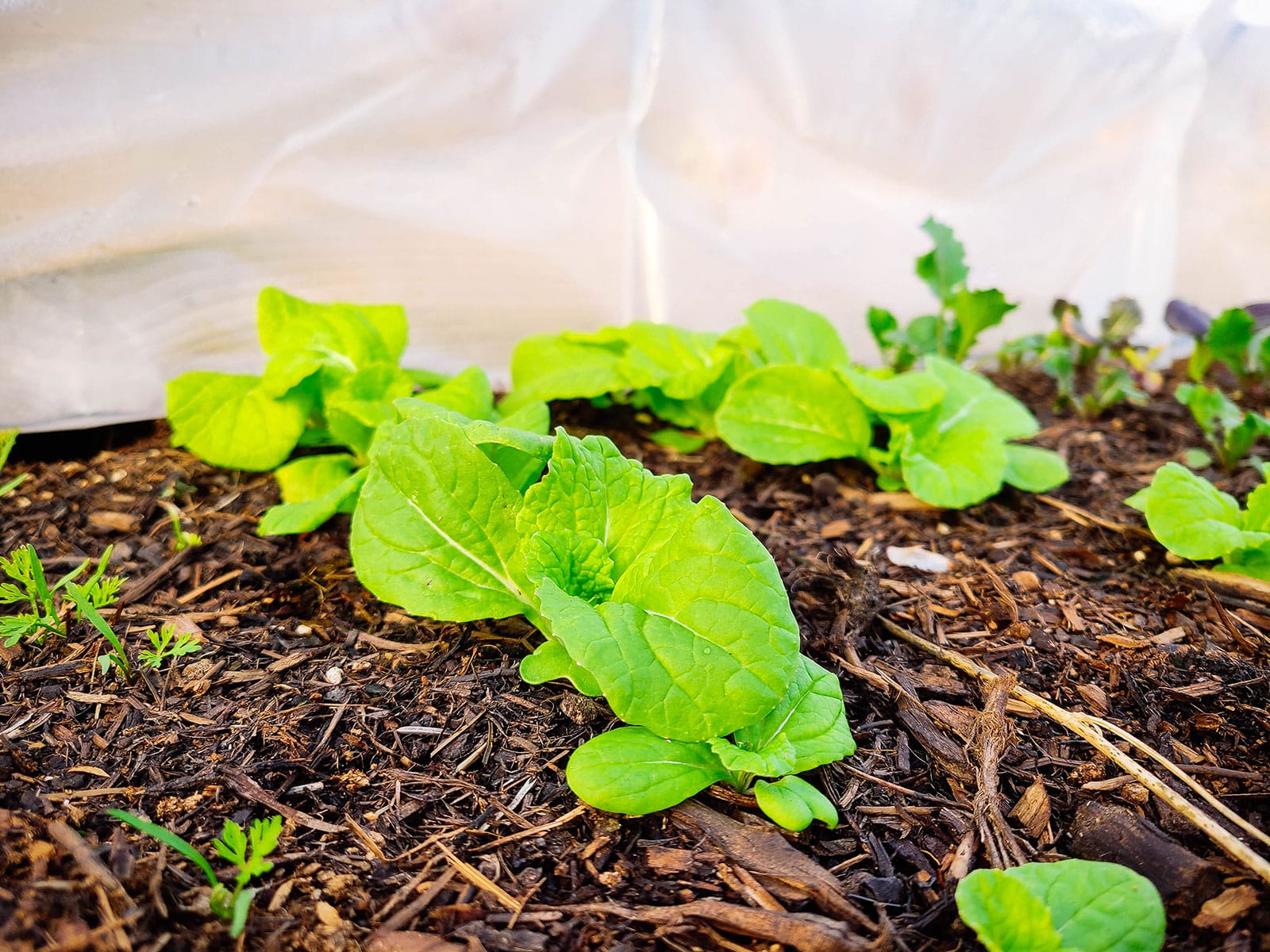
4. Are you winter gardening, overwintering, or winter sowing?
Much of what I’ve covered here so far pertains to growing and harvesting vegetables in winter, but what if you simply want to get a head start in spring?
Overwintering varieties of kale, cabbage, purple sprouting broccoli, Brussels sprouts, cauliflower, leeks, and other vegetables can be planted in mid to late summer so they grow all winter under a fabric cover and start to produce in early spring.
Or, you can try winter sowing by direct-seeding spinach, arugula, mustard, beets, carrots, fava beans, or parsley under the protection of a plastic cover. The seedlings will grow very slowly all winter, then take off once longer days and warmer temperatures arrive (putting you months ahead of your neighbors).
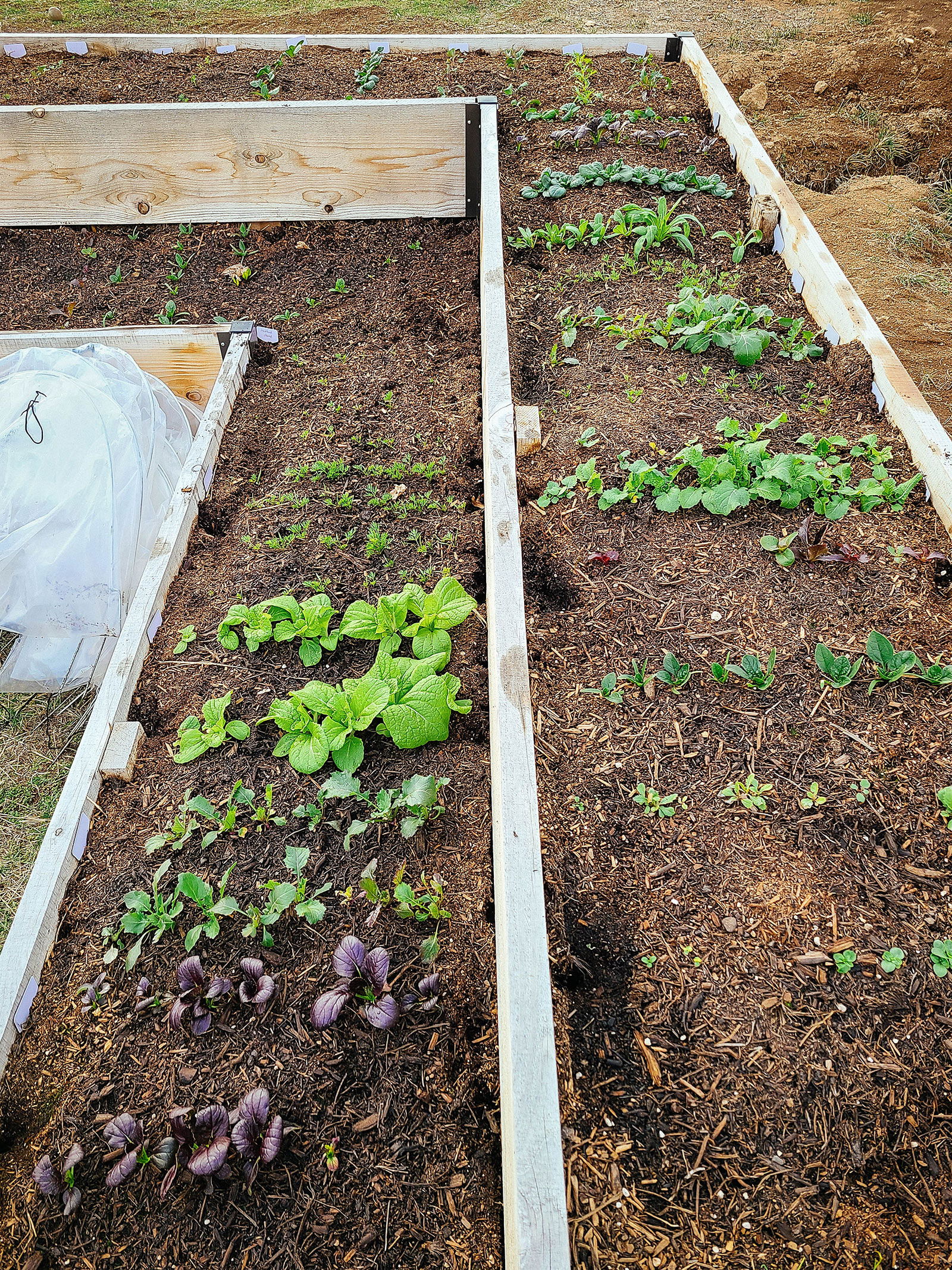
5. How much snow does your garden get?
Heavy snow should be removed from both fabric and plastic tunnels, otherwise the weight can cause your tunnels to collapse. A broom or plastic leaf rake (like this one) makes easy work of snow removal, though snow slides off plastic more readily so it takes less time to unbury your garden. (Quite by accident, I’ve also found that a sturdy child-sized rake like this one works well for brushing off snow.)
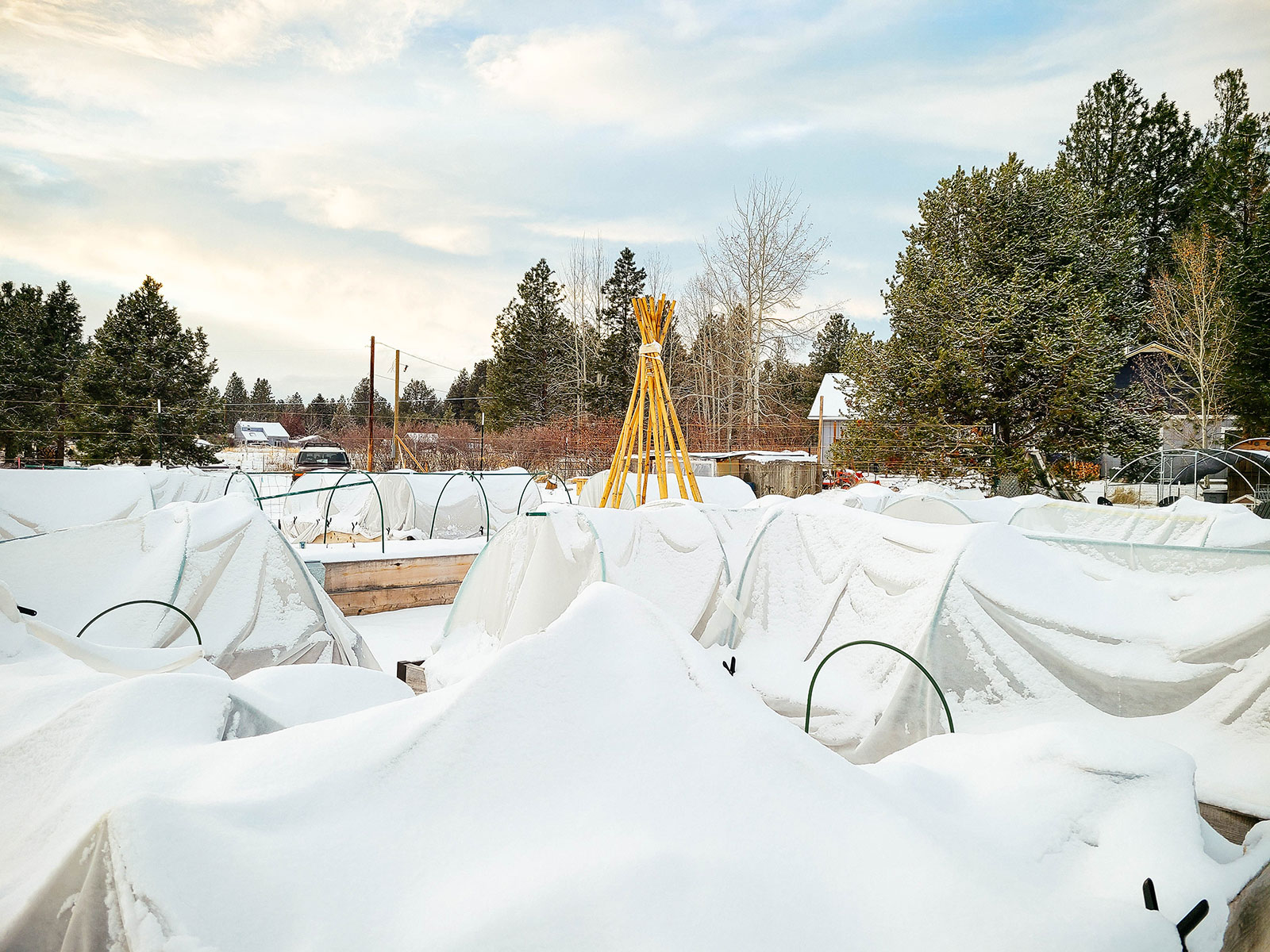
However, plastic-covered tunnels may need to be vented as soon as a snowstorm passes, which can be challenging if the edges are covered with a foot of snow.
6. Can you water your garden in winter?
Plants still need water in winter, even when they’re dormant. Fabric covers have an advantage over plastic because they’re permeable—so your plants still get soaked in winter rains. In turn, this further raises the humidity inside your low tunnel, providing more protection against winter desiccation.
7. Do you have to shade your garden in summer?
I live in the high desert, which means I often have to cover my garden beds in the middle of summer to shade my plants from searing heat. My low tunnel frames are permanent so I always have a structure in place to protect my plants year-round, whether from cold, heat, or hail.
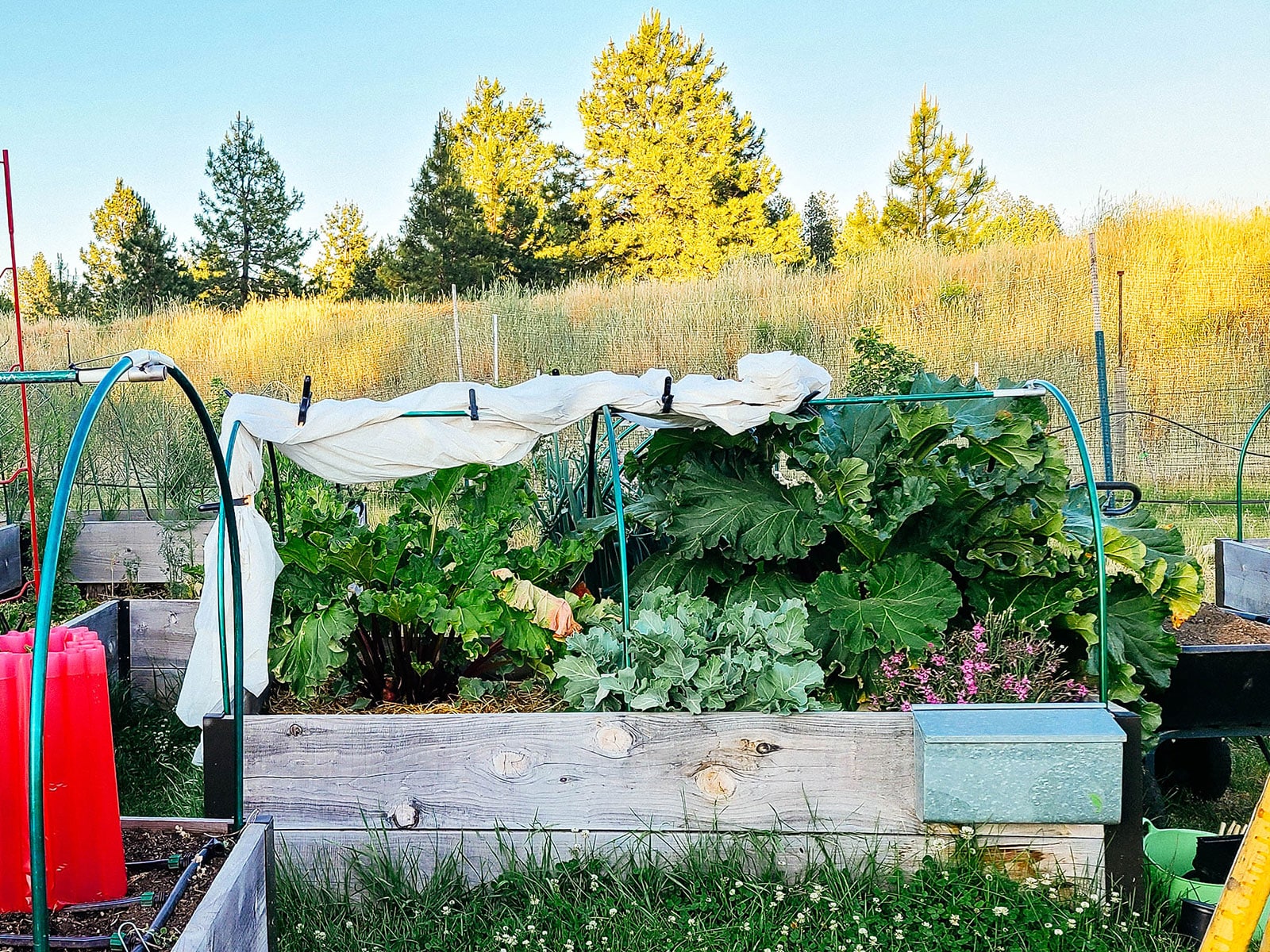
One benefit of using fabric over plastic row covers is that the fabric can double as shade cloth. I attach mine with clamps, and simply position the fabric on my low tunnel as needed to provide a canopy for my plants. This is super helpful if all you need is a little midday shade; the fabric can be clipped in such a way that it only covers the top of the tunnel (instead of going all the way down the sides).
Where to buy row covers
This is what I’ve used or currently use in my winter garden. To affix the covers to my low tunnels, I like a combination of snap clamps (to really hold down the top) and large spring clamps (for ease of moving the cover and clipping to the edge of my raised bed).
Recommended
Row cover clamps
Fabric
The industry standard for fabric row covers is Agribon, though many other brands are available. They’re typically labeled by weight, which affects not only the degree of frost protection, but also how much light reaches your plants.
Because the reduced day length is already a limiting factor in winter, I recommend going no heavier than a medium-weight fabric like Agribon AG-30, which lets in 70 percent of available sunlight and is rated down to 26°F. In a pinch, you can always double up on the fabric if temps drop precipitously low overnight.
If your winters rarely dip below 25°F, then Agribon AG-19 is a better choice since it lets in 85 percent of available sunlight while still offering protection down to 28°F.
Fabric covers do build up heat on sunny days, so it’s important to remove them if your daytime high will exceed 70°F.
Recommended
Fabric row covers
Plastic
Clear plastic sheeting is available at most hardware and home improvement stores and yes, you can save money by using construction-grade plastic. But if you’re in a harsher climate or want your plastic to last several winters, UV-treated greenhouse plastic is a better way to go. They’re usually sold in rolls in various lengths, and I recommend getting a 6 mil polyethylene film for durability and ease of handling.
Plastic covers should be vented in winter if the daytime high exceeds 40°F (or the temperature inside the tunnel starts to approach 60°F).
Recommended
Plastic covers
Fleece or poly tunnels
If you have a small garden bed, another option I really like is Easy Tunnels, which are prefabricated fleece or poly tunnels that you fold out (kind of like an accordion) and put over your plants. I used these when I first experimented with winter gardening and that was how I got hooked on year-round growing without a greenhouse!
These compact tunnels already have fabric or plastic covers attached to pre-bent metal frames, so you don’t have to fuss with rolls, clamps, or clips. The only thing I’d recommend adding is a way to secure the tunnel, since it’s so lightweight that it’s prone to blowing away in a big storm. (I zigzagged a thin nylon rope over my Easy Tunnel and anchored it into the soil with landscape pins.)
Recommended


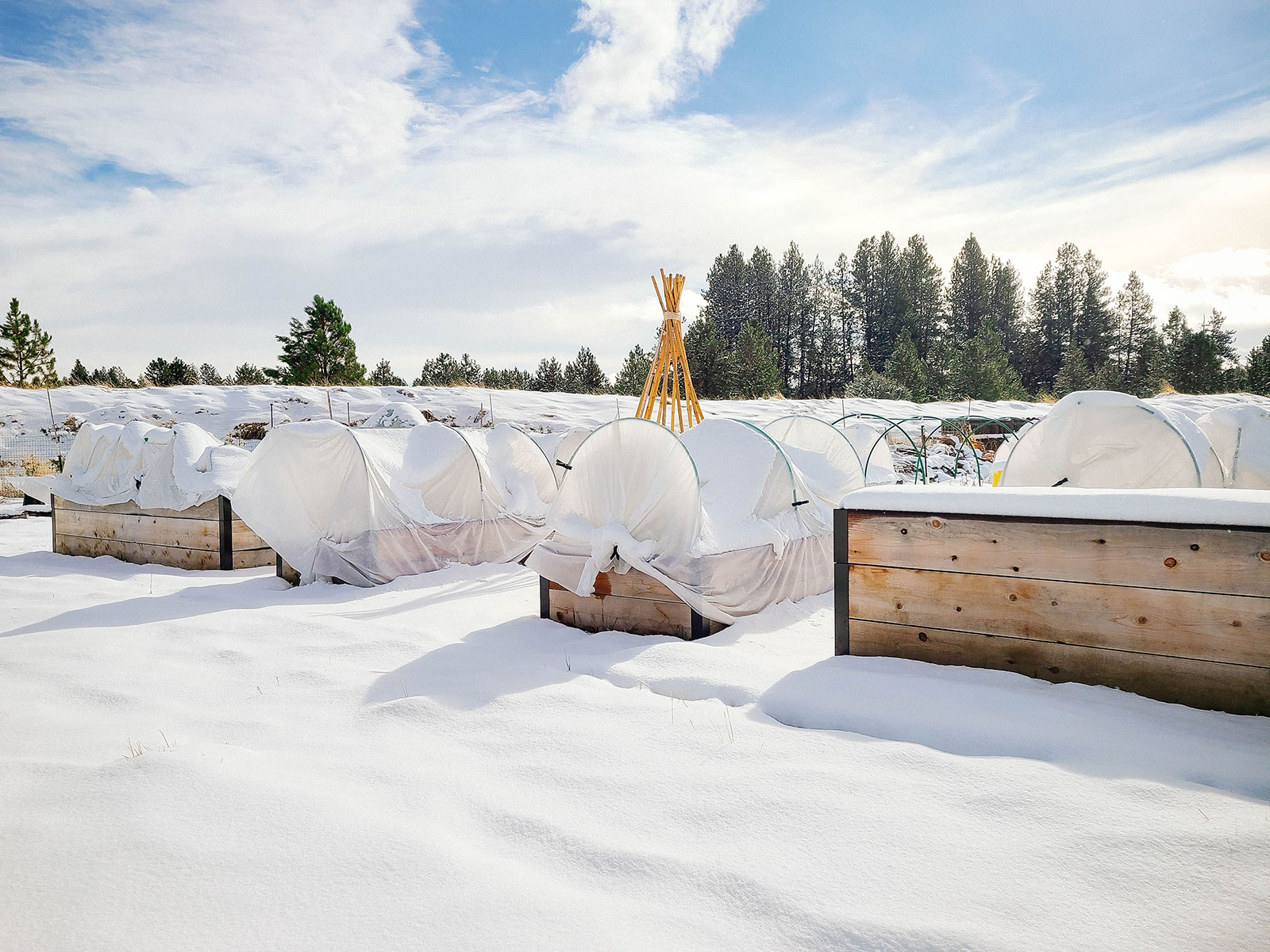













You always have super-useful information, thank you. My question is about winter watering. I’m in zone 5 and I worry that watering will cause the roots to freeze in my plastic containers and fabric pots (I do not have any land available for a regular garden). How much of a concern is this?